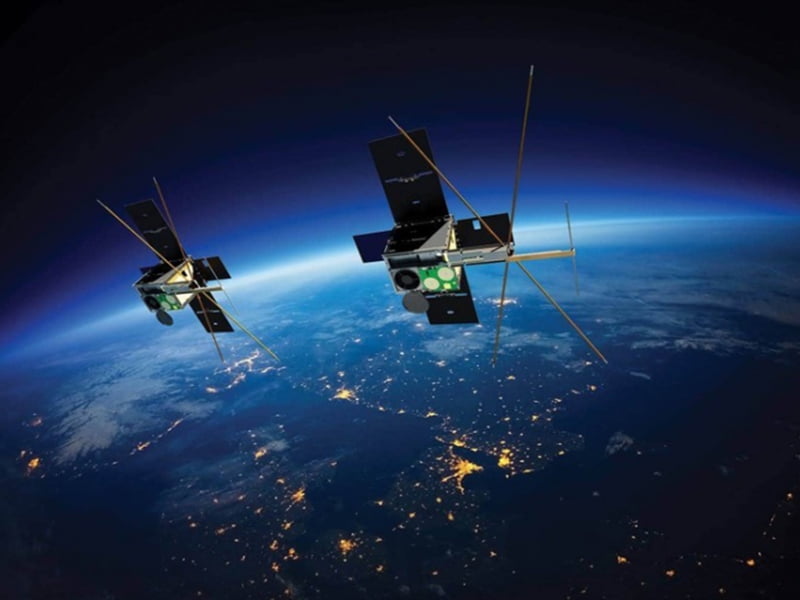Highlighting the challenges created by the rapid increase in the use of the the low-Earth orbit region, a report from Flinders University has called on domestic governments to give the issue more regulatory attention.
The report provides broad commentary on space uses involving satellites while highlighting challenges faced by the growing use of the low-Earth orbit (LEO) region and the spread of satellite ‘mega-constellations’ deployed by global corporate entities.
It found that commercial space use is “running ahead of anticipated regulatory needs, but this is inevitable within the sparse international space law framework, which anticipated far more limited (and governmental) uses of outer space”.
Space Industry Association of Australia deputy chair Professor Melissa De Zwart and research associate Joel Lisk prepared the report ahead of the World Radio Conference in 2023.

The research was produced with financial support from the Swinburne University of Technology and its Australian Research Council Discovery Project, Spectrum after Scarcity: Rethinking Radiofrequency Management.
As of December 2020, there were 3,371 active satellites, which is expected to increase at a rapid rate. SpaceX’s Starlink satellite constellation has received approval from the USs Federal Communications Commission to launch 12,000 satellites, with pending applications for 30,000 more.
Between December 2019 and 2020, there was a 77 per cent increase in the number of satellites orbiting Earth, according to the report.
The authors said that the LEO region is both a “limited and fragile domain” and a “research sandpit for activities beyond the moon” that is revealing the limitations of current domestic and international law.
Although mega constellations may reduce the cost of communications and connectivity, as well as the Internet of Things and machine-to-machine applications, the report highlights several challenges arising between emerging uses of space and existing legal frameworks.
These challenges include the congestion of spectrum capacity, physical and spectral interference management, obstruction of optical and radio astronomy, management of space debris that is potentially harmful in space or on Earth, and competition between operators in the LEO region.
“Regulators should be looking to the future to proactively legislate and regulate in order to prevent reactive and inadequate regulatory structures that simply fill gaps,” the report reads.
“Technologies and ambitions in the space sector evolve rapidly. With this in mind, there is a need for substantial and ongoing consideration of how new activities are regulated. A failure to responsibly regulate can both stifle innovation and future activities, and present risks to the future of the space domain for all space users due to the nature of orbit.”
The report highlights the comments of a Boeing Representative who said that the rapid expansion of satellite applications with national regulatory agencies “raises concerns about long-term space safety and sustainability”.
In particular, the report notes that the increase in orbital traffic “risks the quality of scientific observation activities and is causing concern amongst stakeholders who attach cultural significance to the night sky”. The report also notes that this challenge will likely be ongoing given the lack of a firm action or a clear resolution.
It also calls for countries to cooperate when considering the impact of impacts of space activities that each may authorise. The report highlights that existing competition and antitrust laws have a part to play in governing the use of the LEO region to prevent a dominant operator from upholding technological barriers to the entry of competitors.
The full report can be accessed here.
In November 2021, the House of Representatives Standing Committee on Industry, Innovation, Science and Resources delivered its Australian Space Industry Report, which contained 38 recommendations on supporting industry.
Last month, the Communication Alliance proposed a new spectrum strategy to the federal government, including a call for even closer collaboration with the International Telecommunication Union. The use of radio spectrum frequencies in Australia is managed by the Australian Communications and Media Authority (ACMA).
Do you know more? Contact James Riley via Email.


An economist may view this problem as a simple scarcity problem – there isn’t an infinite capacity for LEOs in eiher physical or spectrum space – and wuld conclude the solution is an auctioning regime for the finite capacity. A different economist might view it as an economies of scale issue, that in the LEO market it is get big or get out.
The two together suggest a licencing regime. I’m on the record as suggesting the Australian government should partner with one LEO constellation provider – and I choose Starlink – and become an investor and exclusive owner of a region of geographic coverage being all of Australia and all of the area of the Pacific Island states. The services in the area cover the pacific plus ground station infrastructure should then be a gift to those states as part of our aid program.